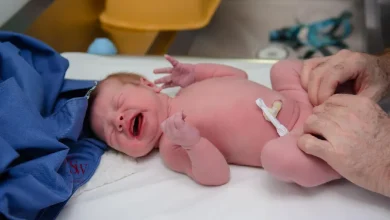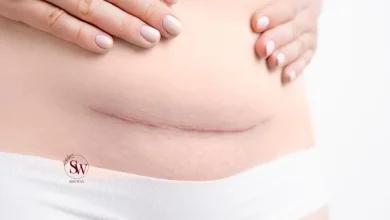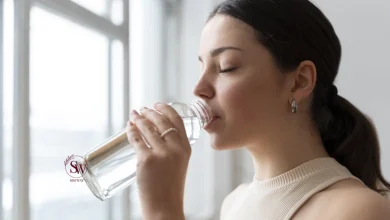Get Rid of Blackheads on Nose
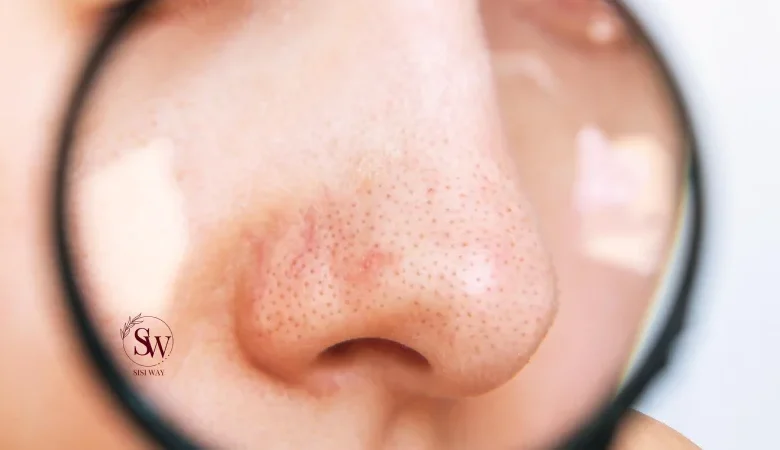
How to Get Rid of Blackheads on Nose
Blackheads, also known as open comedones, can be a frustrating and persistent skin concern, particularly when they appear on the nose. These tiny dark spots, caused by clogged pores, can affect people of all ages and skin types. However, with the right approach and consistent skincare practices, you can effectively combat and minimize the appearance of blackheads on your nose. In this article of sisiway, we will explore some proven techniques to help you achieve a clear and blackhead-free nose. Also If you want to know how to get rid of blackheads on the nose at home, the provided solutions will be suitable for you.
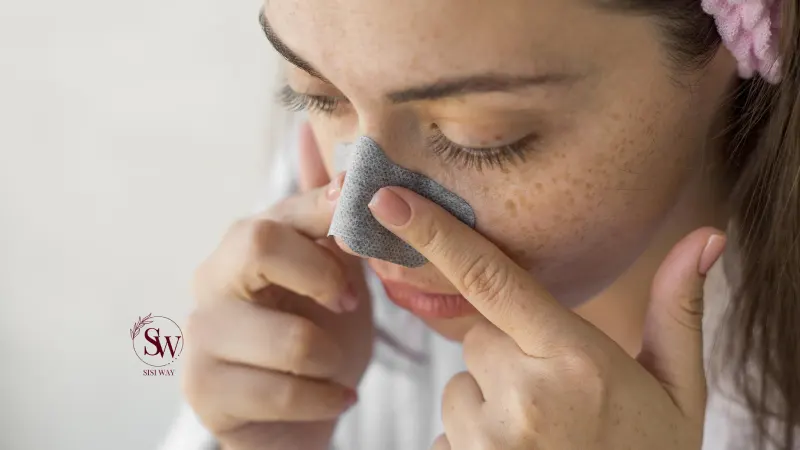
Regular Cleansing and Get Rid of Blackheads on Nose
One of the primary causes of blackheads is the accumulation of dirt, oil, and dead skin cells on the skin’s surface. Regular cleansing is a fundamental step in getting rid of blackheads on the nose. By cleansing your face twice daily with a gentle cleanser, you can effectively remove excess oil, dirt, and impurities that contribute to blackhead formation. When choosing a cleanser, look for one specifically formulated for your skin type. For oily or acne-prone skin, opt for a cleanser containing salicylic acid, a beta hydroxy acid known for its ability to penetrate pores and exfoliate the skin. For dry or sensitive skin, choose a gentle cleanser that won’t strip away natural oils or cause irritation. By consistently cleansing your face, you can keep your pores clean and minimize the occurrence of blackheads.
In addition to regular cleansing, exfoliation is another crucial aspect of getting rid of blackheads on the nose. Exfoliating helps remove dead skin cells, unclog pores, and promote a smoother complexion. Incorporate a gentle exfoliating scrub or a chemical exfoliant, such as one containing glycolic acid or lactic acid, into your skincare routine. Be mindful not to over-exfoliate, as this can irritate the skin and potentially worsen blackheads. Aim to exfoliate your nose once or twice a week to maintain a healthy balance. By incorporating both regular cleansing and exfoliation, you can effectively combat blackheads and achieve a clearer, smoother nose.
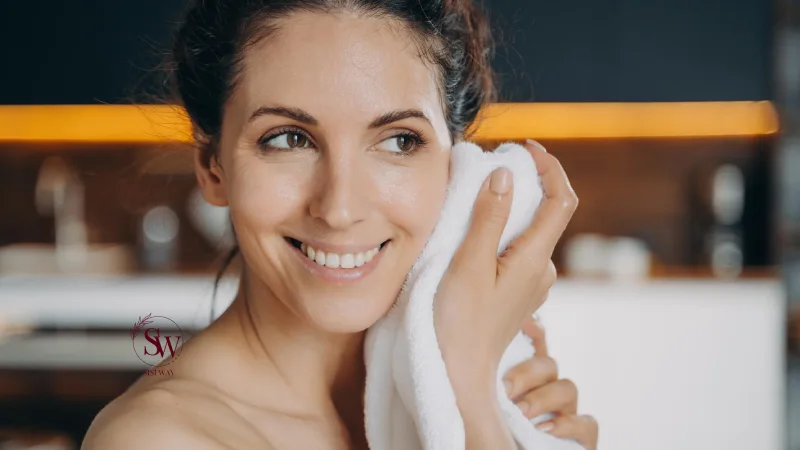
Exfoliation for Getting Rid of Blackheads on Nose
Exfoliation plays a crucial role in getting rid of blackheads on the nose. By incorporating exfoliation into your skincare routine, you can effectively remove dead skin cells and unclog pores, reducing the occurrence of blackheads. There are two main types of exfoliation: mechanical and chemical. Mechanical exfoliation involves using physical scrubs or brushes to manually slough off dead skin cells. When selecting a mechanical exfoliator for your nose, choose a gentle scrub with fine particles to avoid causing irritation or micro-tears in the skin. Chemical exfoliation, on the other hand, involves using products with active ingredients like salicylic acid or glycolic acid to dissolve dead skin cells and unclog pores. These chemical exfoliants can penetrate deeper into the pores and help regulate oil production, preventing the formation of blackheads.
If you want to know how to rejuvenate skin, it should be mentioned that Exfoliation the skin is one of the ways to achieve that, but it should be done according to a specific routine and by a skincare professional to have positive results. To effectively exfoliate your nose and get rid of blackheads, start by cleansing your face to remove any surface impurities. Then, apply a small amount of your chosen exfoliator to your nose and gently massage it in circular motions for about a minute. Be careful not to apply too much pressure or scrub too vigorously, as this can cause irritation. Afterward, rinse off the exfoliator with lukewarm water and follow up with a moisturizer to keep your skin hydrated. By incorporating regular exfoliation into your skincare routine, you can help maintain a clear and blackhead-free nose. However, it’s important to note that over-exfoliation can lead to skin irritation, so it’s best to follow the recommended guidelines and listen to your skin’s needs.
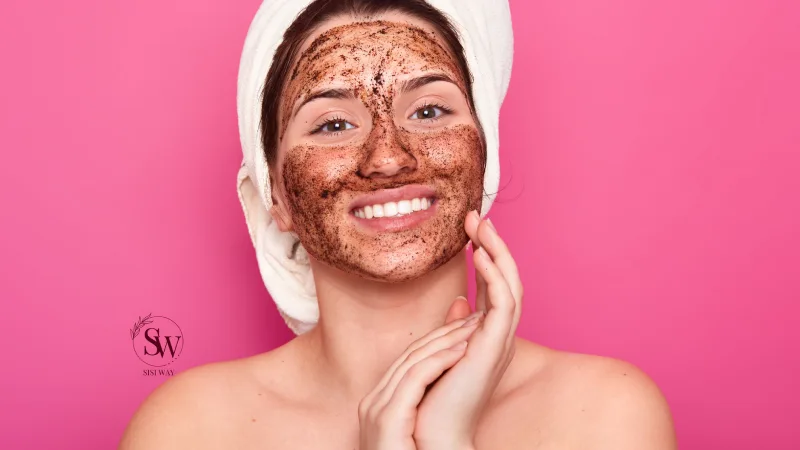
Steam and Facial Masks
Steam and facial masks are effective techniques to get rid of blackheads on nose. Steam helps to open up the pores, making it easier to remove blackheads. To use steam, fill a bowl with hot water and place your face over the bowl, covering your head with a towel to trap the steam. Allow the steam to penetrate your skin for about 5-10 minutes. This process helps to soften the blackheads and make them more accessible for extraction or removal.
Facial masks, particularly those containing ingredients like clay or charcoal, can also be beneficial in eliminating blackheads. These masks work by drawing out impurities, excess oil, and dead skin cells from the pores, which can reduce the appearance of blackheads. After steaming your face, apply a thin, even layer of the facial mask to your nose and surrounding areas. Leave it on for the recommended time as per the mask’s instructions. Once the mask has dried, gently peel it off or rinse it away with water. This process can help to unclog pores and leave your nose looking cleaner and smoother.
It’s important to note that while steam and facial masks can be effective in managing blackheads, they are not standalone solutions. Regular cleansing and exfoliation should also be incorporated into your skincare routine for optimal results. Additionally, individuals with sensitive skin should exercise caution and avoid overdoing these treatments, as they may cause irritation.
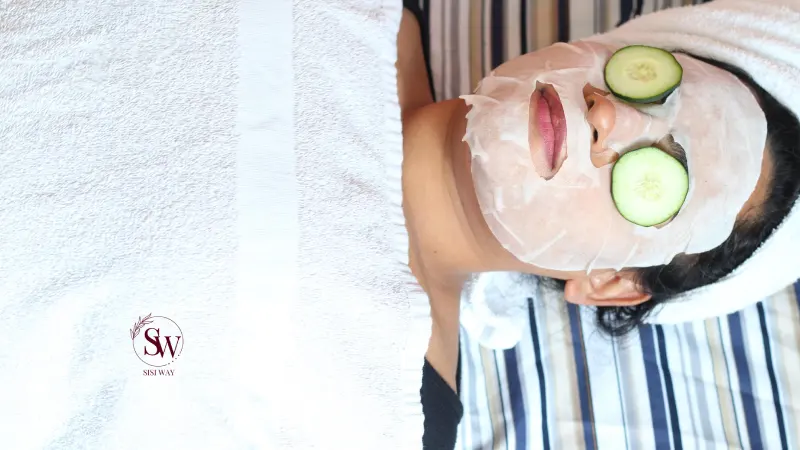
Manual Extraction to Get Rid of Blackheads on Nose
While it is generally recommended to leave extractions to professionals, some individuals choose to remove blackheads manually at home Manual extraction can be an effective method for getting rid of blackheads on the nose, but it should be done with caution to prevent skin damage and infection. Before attempting manual extraction, it’s important to prepare your skin properly. Start by cleansing your face to remove any dirt or impurities. Then, steam your face or apply a warm compress to your nose for a few minutes to help open up the pores and soften the blackheads, making them easier to remove.
To manually extract blackheads, you can use a blackhead extractor tool, which is a small metal tool with a loop or spoon-shaped end. Sterilize the tool with rubbing alcohol before use to minimize the risk of infection. Gently press the looped end of the tool around the blackhead, applying gentle and even pressure to extract the plug. Avoid using your fingers or nails, as this can introduce bacteria or cause skin damage. If the blackhead doesn’t come out easily, do not force it, as it may cause irritation or even break the skin. After extraction, cleanse the area again and apply a soothing toner or a spot treatment containing ingredients like tea tree oil to help prevent infection. Follow up with a non-comedogenic moisturizer to keep the skin hydrated.
It’s important to note that manual extraction should be done sparingly and with caution, as excessive or improper squeezing can cause skin damage and scarring. If you are unsure or have sensitive skin, it’s advisable to consult a dermatologist or skincare professional for professional guidance and treatment options.
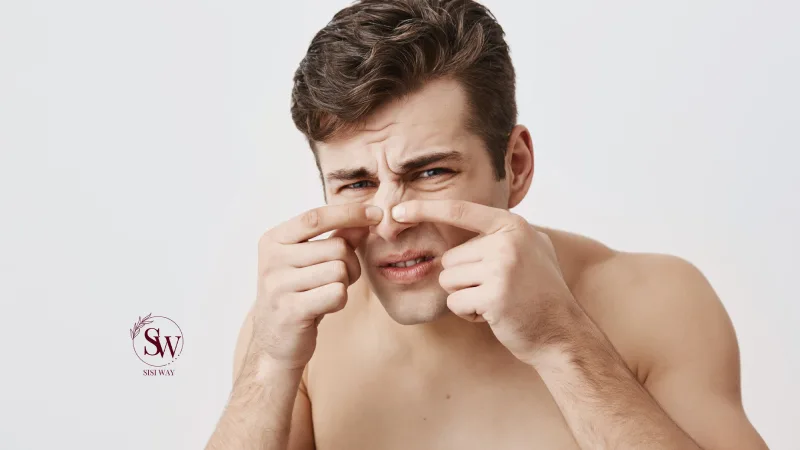
Topical Treatments
Topical treatments can be effective in getting rid of blackheads on the nose by targeting the underlying causes and promoting clearer skin. One commonly used topical treatment is salicylic acid. Salicylic acid is a beta hydroxy acid that penetrates the pores and helps to exfoliate the skin, unclog the pores, and reduce the formation of blackheads. It also has anti-inflammatory properties that can help reduce redness and irritation. Salicylic acid is available in various forms, such as cleansers, toners, serums, and spot treatments. Incorporating a salicylic acid-based product into your skincare routine can help keep your nose free from blackheads and promote a smoother complexion.
Another effective topical treatment for blackheads is retinoids. Retinoids, such as tretinoin or adapalene, work by increasing cell turnover, preventing the clogging of pores, and promoting the shedding of dead skin cells. They also have anti-inflammatory properties and can help reduce the appearance of blackheads over time. Retinoids are available in prescription-strength formulations or over-the-counter options. However, it’s important to note that retinoids can cause skin dryness and sensitivity, so it’s crucial to start with a low concentration and gradually increase usage. It’s recommended to consult with a dermatologist to determine the most suitable retinoid treatment for your skin and to receive proper guidance on usage and potential side effects.
When using any topical treatment, it’s important to follow the instructions carefully and be consistent with the application. It may take several weeks or even months to see noticeable results, as the process of clearing blackheads and improving the overall condition of the skin takes time. Additionally, it’s important to use sunscreen daily when using topical treatments, as they can increase the skin’s sensitivity to the sun.
Also read: How to Treat an Allergic Reaction Rash?
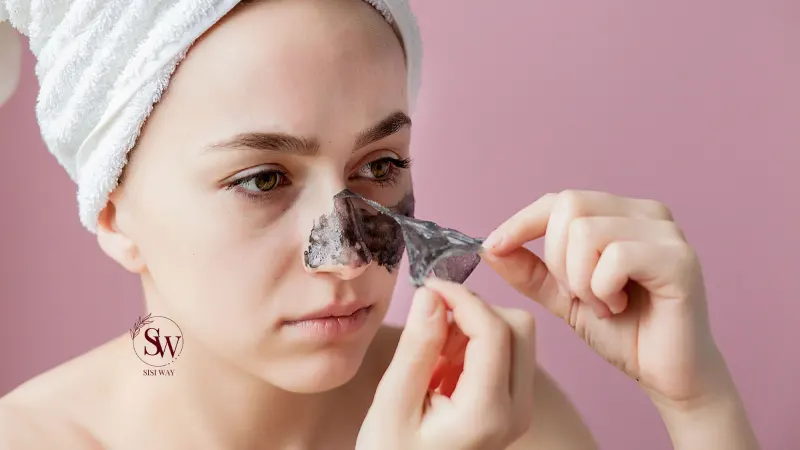
Regular Moisturization
Regular moisturization is a crucial step in getting rid of blackheads on the nose and maintaining overall skin health. While it may seem counterintuitive to moisturize oily or acne-prone skin, keeping the skin properly hydrated can actually help regulate oil production and prevent the overproduction of sebum, which can contribute to the formation of blackheads. When the skin is dehydrated, it can trigger an increase in oil production as a protective mechanism, leading to clogged pores and the development of blackheads. By using a lightweight, non-comedogenic moisturizer specifically formulated for your skin type, you can provide essential hydration without clogging the pores.
In addition to providing hydration, a well-moisturized skin barrier can also help improve the overall texture and appearance of the skin, making it less prone to blackhead formation. When the skin is properly moisturized, it becomes smoother and more supple, reducing the likelihood of dead skin cells getting trapped in the pores and forming blackheads. Look for moisturizers that contain ingredients like hyaluronic acid, which can attract and retain moisture in the skin, as well as niacinamide, which can help regulate oil production and improve the skin’s overall texture. By incorporating regular moisturization into your skincare routine, you can help keep your nose and skin healthy, balanced, and less prone to blackheads.
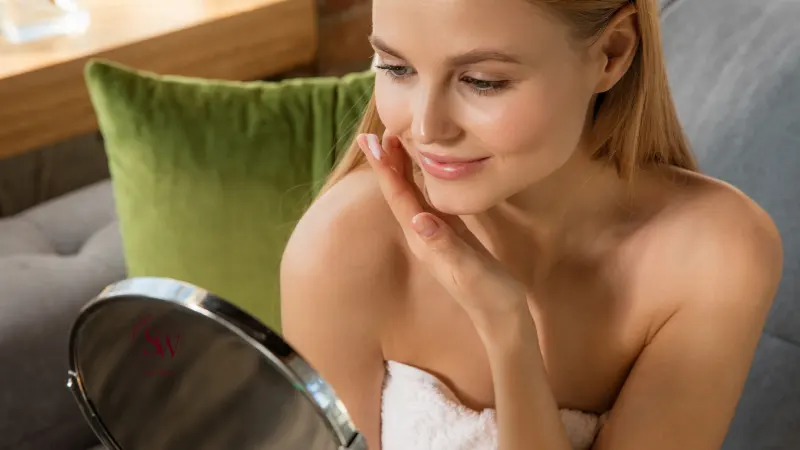
Get Rid of Blackheads on Nose with Toothpaste
Using toothpaste as a remedy for blackheads on the nose is a common home remedy that has been circulating for some time. However, it’s important to note that toothpaste is not specifically designed for skincare, and its effectiveness in treating blackheads is questionable. While toothpaste may contain ingredients like baking soda, hydrogen peroxide, or menthol, which can have some drying or antibacterial properties, there is no scientific evidence to support its efficacy in treating blackheads. In fact, using toothpaste on the skin may cause more harm than good.
While using toothpaste as a remedy for blackheads on the nose is a popular home remedy, it is not recommended due to potential skin irritation and lack of scientific evidence supporting its effectiveness. However, if you still wish to proceed, here is a step-by-step guide on how to use toothpaste to potentially remove blackheads from your nose:
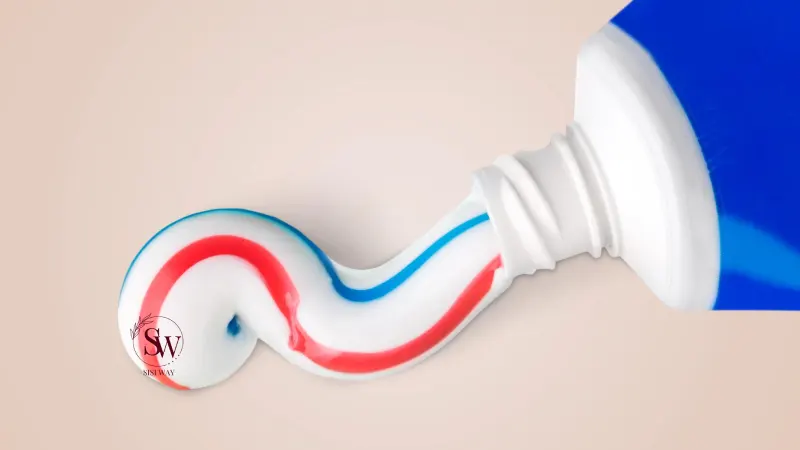
- Select a toothpaste: Choose a plain, white toothpaste without any added colors, gels, or special formulations. Avoid toothpaste with ingredients like whitening agents or fragrances, as these can potentially irritate the skin further.
- Cleanse your face: Start by washing your face with a gentle cleanser to remove any dirt, oil, and impurities from the skin.
- Steam your face: Fill a bowl with hot water and lean your face over the bowl, covering your head with a towel to trap the steam. Steam your face for 5-10 minutes to help open up the pores and make blackhead removal easier.
- Apply a thin layer of toothpaste: After steaming, pat your face dry with a clean towel. Take a small amount of toothpaste and apply a thin layer directly onto the affected areas of your nose. Avoid applying toothpaste to the surrounding skin, as it can cause unnecessary irritation.
- Leave it on for 10-15 minutes: Allow the toothpaste to dry and sit on your skin for about 10-15 minutes. This is believed to help dry out the blackheads.
- Gently scrub and rinse: Using a clean, soft toothbrush or a gentle exfoliating brush, gently scrub the toothpaste in circular motions over the blackhead-prone areas of your nose. Be very gentle to avoid irritating the skin. Afterward, rinse your face thoroughly with lukewarm water to remove all traces of toothpaste.
- Moisturize: Finish by applying a light, non-comedogenic moisturizer to keep your skin hydrated and balanced.
It’s important to note that while some individuals claim success with this method, there is no scientific evidence to support its effectiveness, and it may cause skin irritation or dryness. If you have sensitive skin or are prone to skin issues, it is best to consult with a dermatologist for appropriate and scientifically-backed solutions to address blackheads.
FAQ
- How can I get rid of blackheads on my nose?
Regular cleansing, exfoliation, and steam treatments can help remove blackheads on the nose. Additionally, using topical treatments such as salicylic acid or retinoids can be effective in reducing blackheads over time.
- Can moisturizing help get rid of blackheads on the nose?
Yes, regular moisturization is important in getting rid of blackheads on the nose. It helps maintain a balanced and hydrated skin barrier, preventing excessive oil production and reducing the likelihood of clogged pores.
- Are manual extractions safe for removing blackheads on the nose?
Manual extractions can be effective but should be done with caution to avoid skin damage or infection. It’s important to prepare the skin properly, use sterilized tools, and avoid excessive force. If unsure, it’s best to consult a professional for safe and effective extraction.
Conclusion
Banishing blackheads from your nose requires a consistent skincare routine and a combination of effective techniques. Regular cleansing, exfoliation, steaming, and using facial masks can help keep your pores clean and minimize blackhead formation. If you choose to extract blackheads manually, exercise caution and maintain proper hygiene. Incorporating topical treatments and moisturizers suitable for your skin type will further aid in reducing blackheads and maintaining a healthy complexion. Remember to be patient, as achieving and maintaining clear skin takes time and dedication.
Read more: Everything About Skin Tags

